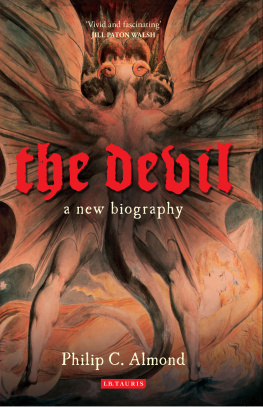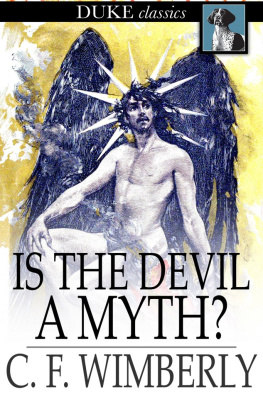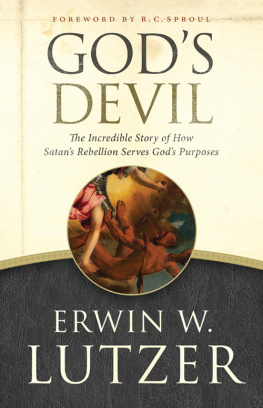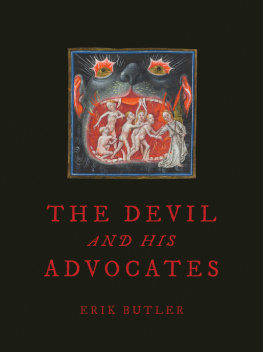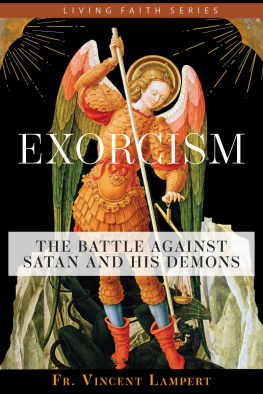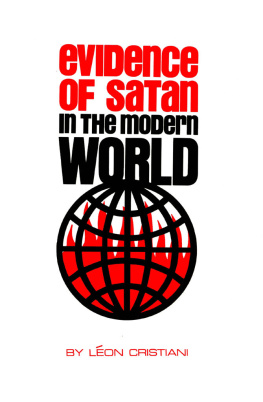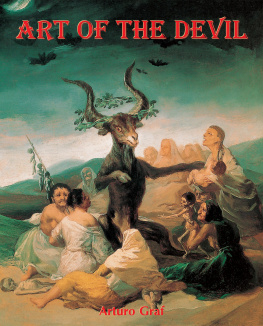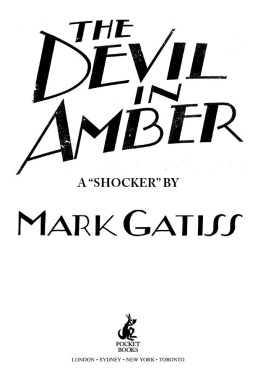Philip C. Almond is Professor Emeritus of Religion at the University of Queensland. His previous books include The Witches of Warboys: An Extraordinary Story of Sorcery, Sadism and Satanic Possession (2008), Englands First Demonologist: Reginald Scot and The Discoverie of Witchcraft (2011) and The Lancashire Witches: A Chronicle of Sorcery and Death on Pendle Hill (2012), all published by I.B.Tauris.
The Devil has hardly lacked for biographers in the past forty years, but Philip Almonds new book represents a valuable addition to the list of such studies. It is comprehensive, spanning the whole range of time, amounting to two and a half millennia, in which Satan has been a figure in the Western imagination. It is lucid, explaining often quite complex theology in a manner which can be understood by, and makes the material genuinely interesting and exciting to, any readers. It will have an especial appeal to those in the English-speaking world, as, following a first half which concentrates on the development of the standard concept of the Devil in Christian theology, it examines how the implications of it worked out in England in particular; but it still keeps a hold on Continental European texts and events. All told, this is probably the best scholarly book on the subject currently available to a general audience.
Ronald Hutton, Professor of History, University of Bristol
Philip Almonds new book is a triumph of the simple exposition of complex concepts. With humour and charm, it proceeds accessibly from the earliest Jewish writings on demons to eighteenth-century attempts to challenge the belief that Satan was active in human affairs. Angels, giants, demoniacs, witches and divines fill its pages, and the breadth of research informing the book is impressively broad. Yet the text is informal and readable. Almond has made theology and demonology approachable and his account rips along. Readers will find a wealth of great stories recounted here. The book also provokes serious thought about the process of demonising groupings belonging to despised sects or social groups, and the terrible consequences of regarding other people as agents of the Devil. This is an entertaining and informative read.
Marion Gibson, Associate Professor of Renaissance and Magical Literatures, University of Exeter
This fascinating and tragic account of his influence through history will be a real eye-opener to anyone who supposes that the inconvenience of his not existing would limit the damage the Devil could do. Fundamentally, the Devil owes his powers to the problem of reconciling Gods goodness with Gods omnipotence. Following with deep learning a trail of confusion, dogmatism and persecution, Philip Almond in his vivid biography convincingly demonstrates that the Devil was, and is, a very bad idea.
Jill Paton Walsh, author of Knowledge of Angels , shortlisted for the Booker Prize
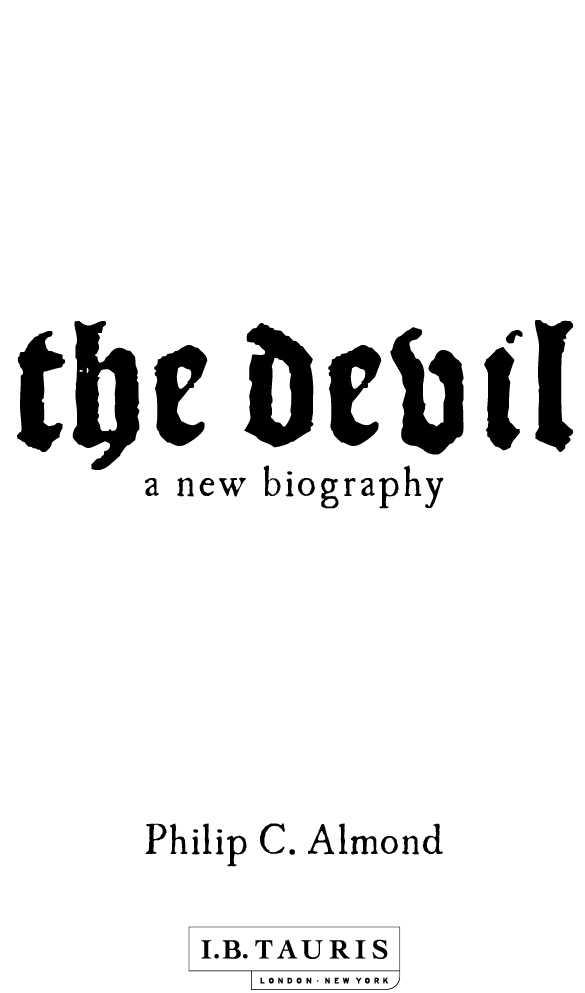
Published in 2014 by I.B.Tauris & Co Ltd
6 Salem Road, London W2 4BU
175 Fifth Avenue, New York NY 10010
www.ibtauris.com
Copyright 2014 Philip C. Almond
The right of Philip C. Almond to be identified as the author of this work has been asserted by him in accordance with the Copyright, Designs and Patents Act 1988.
All rights reserved. Except for brief quotations in a review, this book, or any part thereof, may not be reproduced, stored in or introduced into a retrieval system, or transmitted, in any form or by any means, electronic, mechanical, photocopying, recording or otherwise, without the prior written permission of the publisher.
ISBN: 978 1 78076 403 0
eISBN: 978 0 85773 488 4
A full CIP record for this book is available from the British Library
Typeset in 11.25/13.75pt Palatino by JCS Publishing Services Ltd, www.jcs-publishing.co.uk
Bad as he is, the Devil may be abusd,
Be falsly chargd, and causelessly accusd,
When Men, unwilling to be blamd alone,
Shift off these Crimes on Him which are their Own.
Daniel Defoe, The History of the Devil (1727)
To Lotus
Contents
Illustrations
The three archangels drive Lucifer from heaven into hell. The Three Archangels by Marco dOggiono (sixteenth century). By permission of The Picture-Desk.
Adam and Eve are tempted by Satan in the form of a four-legged, virgin-headed serpent. The Fall of Man and the Lamentation by Hugo van der Goes (14705). Public domain.
The angel of the Lord, described as a satan (adversary), is called out by God to stop Balaam from cursing the people of Israel. Balaam and the Angel from The Mirror of Human Salvation (fifteenth century). By permission of lAgence photographique de la Runion des muses nationaux.
Job, covered in boils, is assailed by Gods emissary the Satan. Job and the Devil from The Mirror of Human Salvation (fifteenth century). By permission of lAgence photographique de la Runion des muses nationaux.
Christ is tempted by the Devil. The Temptation of Christ from The Mirror of Human Salvation (fifteenth century). By permission of lAgence photographique de la Runion des muses nationaux.
Demons delighting in tempting Saint Anthony in the desert. The Temptation of St Anthony of Egypt by Hieronymus Bosch (14501516). By permission of The Picture-Desk.
The Devil presents Saint Augustine with the Book of Vices. St Augustine and the Devil by Michael Pacher ( c .1480). By permission of lAgence photographique de la Runion des muses nationaux.
The Angel, holding the keys of hell, enchains the Devil in the shape of a dragon who is then bound in the pit. The Angel Enchains the Devil from a commentary on the book of Revelation by Beatus of Liebana ( c .776). By permission of Bridgeman Art.
Christ harrows hell between his death and resurrection, rescuing those held captive. Christ Harrows Hell from a northern English manuscript (fifteenth century). Public domain.
At the request of Saint Peter, the demons enabling Simon Magus to fly allow him to fall to his death. The Fall of Simon Magus by Lorenzo Lotto (fifteenth century). By permission of The Picture-Desk.
In the top panel, Theophilus makes the first written pact with the Devil. In the second panel, regretting his deal with the Devil, Theophilus begs the Virgin Mary to intercede with God on his behalf. Theophilus and the Devil from the Ingeborg Psalter (twelfth century). By permission of lAgence photographique de la Runion des muses nationaux.
Faust makes a circle in the dust with a wand. Then he begins to call on Mephostophiles the spirit, and to charge him in the name of Beelzebub to appear there. Dr Faustus in a Magic Circle from The Historie of the Damnable Life and Deserved Death of Doctor John Faustus (1648). By permission of Bridgeman Art.
The Devil attempts to seize a magician who has formed a pact with him but is prevented by a monk. The Devil and the Magician from Chroniques de Saint-Denis (thirteenth century). By permission of Bridgeman Art.
The Devil appears as the sin of vanity. The lady looks in the mirror but all she sees is Vanitys backside. The Devil and the Coquette from Der Ritter von Turm (1493). By permission of Bridgeman Art.
A witch rides backwards on a goat. While referencing the canon Episcopi in which women ride on beasts at night with the goddess Diana, it invokes the tradition of witches flying to the Sabbath. Witch Riding a Goat by Albrecht Drer ( c .15001). Public domain.
Witches gather at the Sabbath to worship the Devil depicted as a goat. The witch is about to kiss the goats backside. The Witches Sabbath at Vaudois from The Book of Occult Sciences (fifteenth century). By permission of The Picture-Desk.

